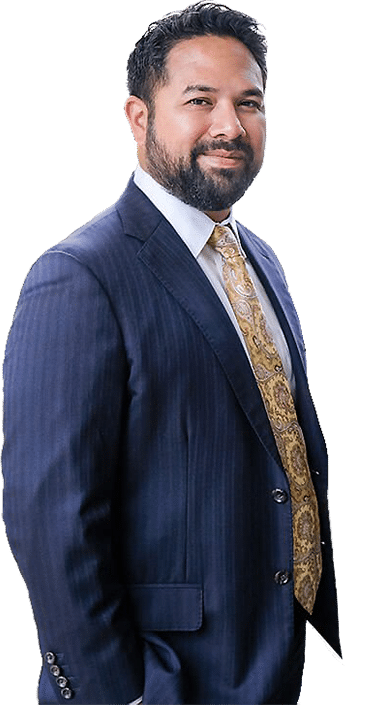Houston Personal Injury ATTORNEY
Motorcycle Accidents in League City: Safety Tips for Gulf Coast Riders

10+
YEARS OF PERSONAL EXPERIENCE
5-Star
RATING ON
GOOGLE REVIEWS
1,000+
CASES AND
CLIENTS
$20 M
IN SETTLEMENTS & VERDICTS
Motorcycle riding in League City presents unique challenges due to coastal weather conditions, heavy tourist traffic, and construction zones that create specific hazards for two-wheeled vehicles.
The Gulf Coast environment brings sudden fog, strong crosswinds on bridges, and wet road conditions that can catch riders off guard. At the same time, seasonal beach traffic increases the risk of accidents with distracted or unfamiliar drivers.
League City riders must navigate Texas motorcycle laws while adapting to local conditions, such as morning fog banks over Clear Lake, afternoon thunderstorms, and debris from ongoing construction on major roads like Highway 96 and NASA Parkway.
Understanding these risks and following proper safety protocols can prevent many accidents, but knowing your legal rights becomes crucial if a negligent driver causes a crash.
League City’s location between Houston and Galveston creates unique dangers that inland riders don’t face. The coastal environment brings sudden weather changes, heavy tourist traffic, and road conditions that can catch even experienced riders off guard
Coastal Weather And Bridge Crosswinds
Gulf moisture creates fog banks that appear without warning, especially near Clear Lake and Galveston Bay. These fog patches can dramatically reduce your visibility in a very short amount of time.
Bridge crosswinds pose another serious threat to motorcyclists. The Kemah Bridge and other elevated roadways act like wind tunnels during storms. Crosswinds can reach 40+ mph and push your bike sideways into other lanes or barriers.
Weather hazards you’ll encounter include:
Morning fog:
Dense patches that form quickly over water and low-lying areas
Afternoon thunderstorms:
Pop-up storms that make roads slick within minutes
Bridge crosswinds:
Sudden gusts that can knock you off course without warning
Tourist And Weekend Traffic To Galveston
Weekend beach traffic creates dangerous congestion on I-45 and FM 518. Out-of-state drivers unfamiliar with Texas roads often engage in reckless driving, making sudden lane changes and unexpected turns. They frequently don’t know to look for motorcycles.
Tourist season typically stretches from spring through fall, leading to noticeably heavier weekend traffic.
Work Zones, Debris, And Lane Shifts
Construction on Highway 96 and NASA Parkway creates ongoing hazards for motorcyclists. Lane shifts force you into unfamiliar traffic patterns where other drivers may not expect you.
Construction debris poses a unique threat to two-wheeled vehicles. A small piece of gravel that a car rolls over easily can cause you to lose control. Constantly scan ahead for loose materials, especially in work zones.
Texas Motorcycle Laws That Apply In League City
Texas motorcycle laws apply statewide, but League City riders face specific enforcement patterns. Understanding these laws helps prevent both accidents and legal issues that could affect any future claims.
Helmet And Eye Protection Requirements
The Texas helmet law is straightforward but has exceptions. Riders 21 and older can ride without helmets if they have proper insurance coverage or have completed a state-approved safety course.
Eye protection is mandatory for all riders regardless of age or helmet status. This means safety glasses, goggles, or a face shield. Regular prescription glasses don’t count as proper eye protection.
Even though riding without a helmet is legal in some cases, doing so increases injury severity in accidents. Insurance companies may use this against you when calculating compensation.
Lane Filtering And Lane Sharing Rules
Lane filtering means riding between stopped cars at traffic lights. Lane splitting means riding between moving traffic in different lanes. Both are illegal in Texas as of 2023.
The penalties start at $175 for a first offense. More importantly, if you’re lane filtering or splitting when an accident happens, you’ll likely be found partially at fault. This reduces any compensation you might receive.
Passenger And Equipment Requirements
If you plan to carry a passenger on your motorcycle in Texas, state law mandates several specific requirements for both the passenger and your bike’s equipment.
Passenger Age and Seating
Any passenger you carry must be at least five years old. To safely accommodate them, your motorcycle must be equipped with both a permanent, designated seat and footrests for the passenger.
Required Lighting and Sound
To be street legal, your motorcycle must have a working headlight, taillight, and turn signals. It is also required to have a compliant muffler that meets legal sound standards.
Visibility and Warning Devices
Your motorcycle must be equipped with mirrors to provide adequate rear visibility. Finally, it must have a horn that can be clearly heard from a minimum distance of 200 feet.
Safety Tips For Gulf Coast Riders
Following traffic laws keeps you legal, but active safety measures prevent most accidents. These tips address the specific conditions you’ll face riding in League City and the surrounding Gulf Coast area.
Speed, Spacing, And Blind Spots On I-45 And SH 96
Speed differential is the danger created when motorcycles travel much faster or slower than the surrounding traffic. Matching traffic flow is safer than weaving through slower cars, even when it’s legal.
Leave plenty of space between your motorcycle and the vehicle ahead, increasing your following distance even more when roads are wet. Count “one-thousand-one, one-thousand-two” after the car ahead passes a landmark to measure your distance.
Position yourself outside vehicle blind spots, especially around 18-wheelers heading to the port, where truck accident risks are highest. The area directly behind and to the sides of large trucks is a danger zone where drivers can’t see you.
Wet Pavement, Painted Lines, And Steel Grates
Hydroplaning happens when your tires lose contact with the road surface due to water. Motorcycles are especially vulnerable because of their narrow contact patch with the pavement.
Specific hazards become deadly when wet:
- Painted lines: Traffic stripes and crosswalks become ice-slick in rain
- Steel bridge grates: Can grab your tires and cause sudden direction changes
- Oil spots: Collect at intersections and become invisible death traps when mixed with water
Reduce speed significantly in wet conditions and avoid painted surfaces whenever possible.
High Visibility And Lighting For Fog And Night
Being seen is as important as seeing in coastal fog and low-light conditions. Bright colors and reflective materials make you visible to other drivers who might not otherwise notice a motorcycle.
Use your headlight during all daylight hours, not just at night. Many states require this, and it’s imperative in the variable lighting conditions near the coast.
Consider auxiliary lights for fog conditions. Fog lights mounted low on your bike cut through dense coastal fog better than your regular headlight alone.
Heat, Humidity, And Ventilated Protective Gear
Texas heat makes it tempting to reduce protective gear, but this dramatically increases injury risk. Heat exhaustion is dangerous, but modern motorcycle safety gear includes ventilation systems that provide cooling while maintaining protection.
Never ride in shorts, t-shirts, or flip-flops regardless of temperature. Road rash from sliding on hot asphalt is far worse than the temporary discomfort caused by proper gear.
Look for gear with mesh panels, vents, and moisture-wicking liners designed for hot climates.
Pre-Ride Checks For Coastal Conditions
Perform these quick checks before every ride, as coastal conditions are harsh on motorcycles:
Tire pressure:
Heat affects pressure; check before each ride
Chain tension:
Humidity accelerates wear and rust
Lights:
Salt air corrodes electrical connections
Brakes:
Moisture can affect brake performance
Taking a few moments for a pre-ride inspection can help you identify mechanical issues and reduce your risk of accidents.
What To Do After A Motorcycle Crash In League City
The moments after an accident determine both your health outcome and legal protection. Acting quickly but carefully protects your rights and preserves evidence for any future claims.
Get Safe, Call 911, And Seek Medical Care
Move to safety if you’re able, but don’t attempt to move if you suspect spinal injuries. Call 911 immediately to create an official record and request a medical evaluation.
Adrenaline masks pain and injury symptoms. Always get medical attention even if you feel fine initially. Many serious injuries don’t show symptoms for hours or days after an accident.
Call Police And Document The Scene
League City Police or the Galveston County Sheriff will respond, depending on the accident location. An official police report becomes crucial evidence for your claim.
Document everything you can safely photograph: vehicle damage, skid marks, road conditions, traffic signals, and your injuries. Get contact information from witnesses who saw the accident happen.
Preserve Your Gear And Bike As Evidence
Your damaged helmet and protective gear prove the severity of impact forces. Don’t repair or dispose of anything until your attorney says it’s safe to do so.
Your motorcycle’s damage tells the story of how the accident happened. Insurance companies use this evidence to determine fault and calculate compensation amounts.
Notify Insurance Without Recorded Statements
Report the accident to your insurance company as required by your policy. However, you don’t have to give recorded statements to the other driver’s insurance company right away.
Insurance adjusters are trained to get you to say things that reduce their company’s liability. Consult with an attorney before giving detailed statements about how the accident happened.
Who Pays After A Motorcycle Wreck In Texas
Texas uses an “at-fault” system, meaning the person who caused the accident pays for damages through their insurance. The state also follows modified comparative negligence rules.
Modified comparative negligence means you can recover damages as long as you’re 50% or less at fault.
| Your Fault Percentage | Can You Recover? | Recovery Amount |
| 0-50% your fault | Yes | Reduced by your % |
| 51%+ your fault | No | Nothing |
| Other driver 100% | Yes | Full damages |
A motorcycle accident attorney helps prove the other driver’s fault and protects you from unfair blame that reduces your compensation.
Common Motorcycle Injuries In Gulf Coast Crashes
Motorcycle accidents often result in severe injuries because riders have little protection from impact forces. Understanding these injuries helps you recognize when you need immediate medical attention.
Road rash occurs when you slide across pavement, causing severe skin abrasions. These wounds often become infected and can require skin grafts for proper healing.
Broken bones are common, especially in arms and legs, as riders try to break their fall. Compound fractures where bone breaks through skin require immediate surgery.
Head injuries happen even with helmets, ranging from concussions to traumatic brain injuries. These injuries may not show symptoms immediately, but can cause long-term problems.
Spinal injuries can result in partial or complete paralysis, a catastrophic injury that dramatically changes victims’ lives. Even minor back pain after an accident should be evaluated immediately by medical professionals, as seemingly minor symptoms can indicate a serious back injury.
Were You Injured? Speak to a League City Motorcycle Accident Lawyer Today
If you’ve been injured in a motorcycle accident in League City, you need legal representation that understands the challenges you face. Insurance companies often try to blame motorcyclists to reduce their payouts, even when car drivers are clearly at fault.
DeHoyos Accident Attorneys offers free consultations to evaluate your case and explain your legal options. We work on a contingency fee basis, meaning you pay no attorney fees unless we win your case.
Our experience with motorcycle bias in insurance claims helps us fight for fair compensation. We understand League City’s roads and common accident patterns, giving us an advantage in building your case.
Contact us immediately while the evidence is fresh and the witnesses’ memories are clear. The sooner you act, the stronger your case becomes.
League City Motorcycle Accident FAQ
Where Do Most League City Motorcycle Accidents Occur
Most motorcycle accidents occur on I-45 between League City and Houston, as well as at major intersections along FM 518 and Highway 96, where traffic from different directions converges.
Who Is Typically At Fault In Car Versus Motorcycle Crashes
In approximately two-thirds of car accident cases involving motorcycles, the car driver is at fault, most commonly claiming they “didn’t see” the motorcyclist before changing lanes or turning.
What Compensation Can You Receive For Texas Motorcycle Accidents
Compensation varies widely based on injury severity and fault determination, ranging from thousands of dollars for minor injuries to over one million dollars for catastrophic cases involving permanent disability.
Can You Lane Split Or Filter In Texas
No, both lane splitting and lane filtering became explicitly illegal in Texas in 2023, with fines starting at $175 and potential fault assignment if an accident occurs while doing either.
What Insurance Coverage Should Gulf Coast Motorcyclists Carry
Beyond state-required minimum liability coverage, you should carry uninsured motorist coverage and consider comprehensive coverage for theft and weather damage common in coastal areas.
How Long Do You Have To File A Texas Motorcycle Injury Lawsuit
Texas gives you two years from the accident date to file a personal injury lawsuit, but you should act much sooner to preserve evidence and witness testimony.
Should You Repair Your Motorcycle Before Your Insurance Claim Settles
Never repair your motorcycle until after documentation and insurance company inspection, as the damage serves as crucial evidence for determining fault, proving someone was speeding in an accident, and calculating compensation amounts.
Does Not Wearing A Helmet Affect Your Texas Injury Claim
Legal helmet-free riding won’t prevent you from filing a claim, but insurance companies may argue that it contributed to head injury severity to reduce your compensation amount.
Do I need a personal injury lawyer to file a claim?
What should I do after an injury
What can I recover after a personal injury?
How should I prepare for my personal injury consultation?
Who can file a personal injury lawsuit in Texas?
How much is my personal injury case worth in Texas?
What is considered “maintenance and cure”?
$2,000,000
CAR ACCIDENT SETTLEMENT
$1,130,000
PEDESTRIAN SETTLEMENT
$1,100,000
SPINAL CORD INJURY
$955,000
PEDESTRIAN ACCIDENT
$1,300,000
CAR ACCIDENT SETTLEMENT
$980,000
CAR ACCIDENT SETTLEMENT
$960,000
MOTORCYCLE ACCIDENT
$850,000
SLIP & FALL SETTLEMENT
$250,000
LONG-TERM DISABILITY
A personal approach to personal injury in Houston, Texas
“As a client to this Law Firm, I found it to be rewarding base on their work ethics. With there expertise, knowledge, flexibility and being responsive to their client needs. They will see that their client receive the best outcome on there case. There are many people out there that have bad ideas about lawyers, but DeHoyos Accident Attorneys will make sure that you’re not stressed about anything pertaining to your case. I’ll recommend that you seek this Lawyer and Law Firm for any unraveling situation you might face.”
RIDLEY OSBOURNE
“I can’t say enough good things about DeHoyos Accident Attorneys! Mr. Ryan DeHoyos is extremely knowledgeable in his field of Personal Injury. I was injured in a motor vehicle accident last year and Mr. DeHoyos stopped at nothing to get me the compensation I deserved. He kept me updated on my case regularly and guided me to get the medical care I needed. Additionally, his staff is so kind and caring, especially Ashley… Thank you, DeHoyos Accident Attorneys for your professionalism in closing my case…and WINNING big!”
RAVEN DOLBERRY














